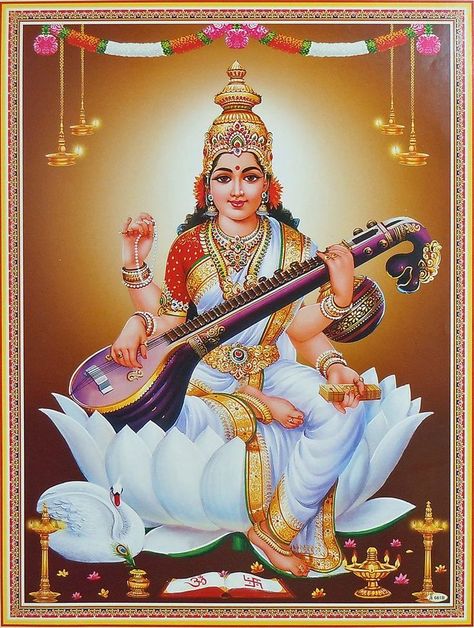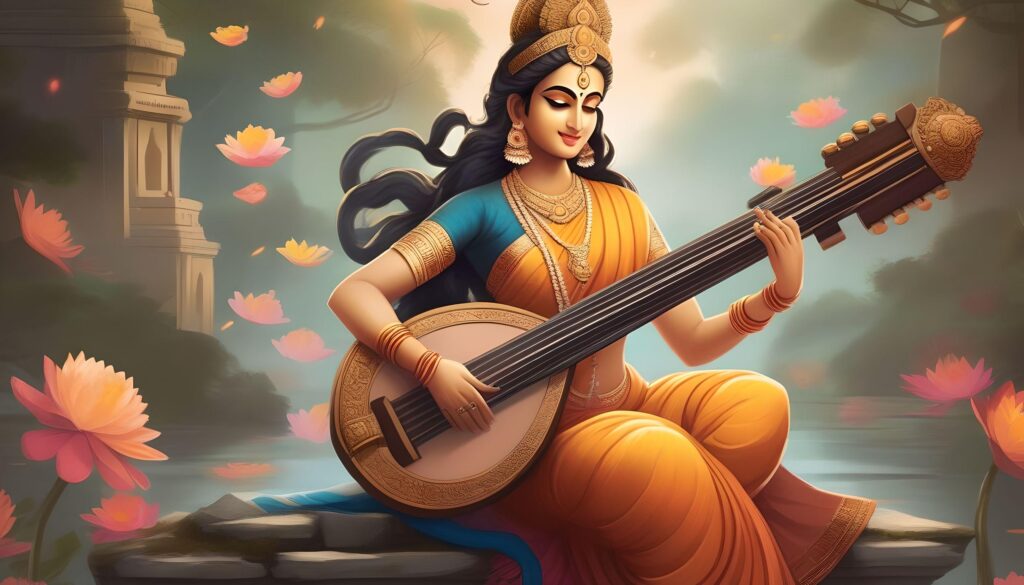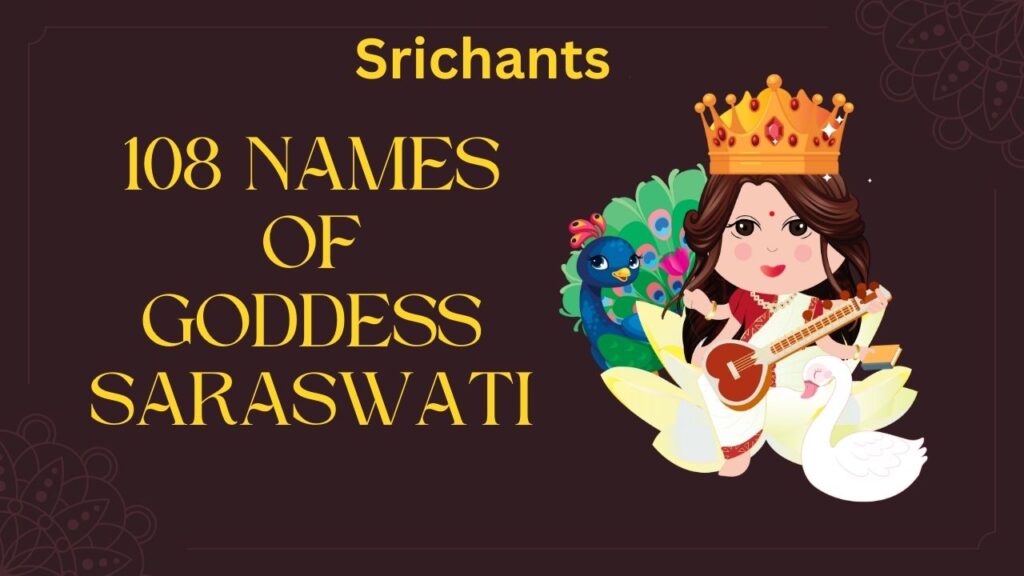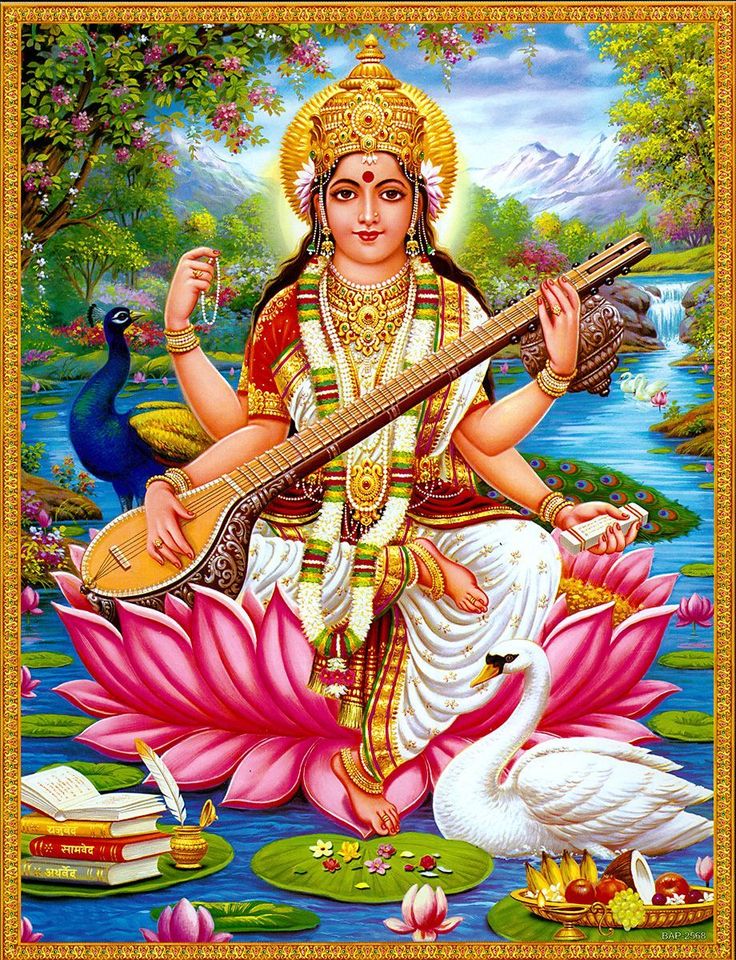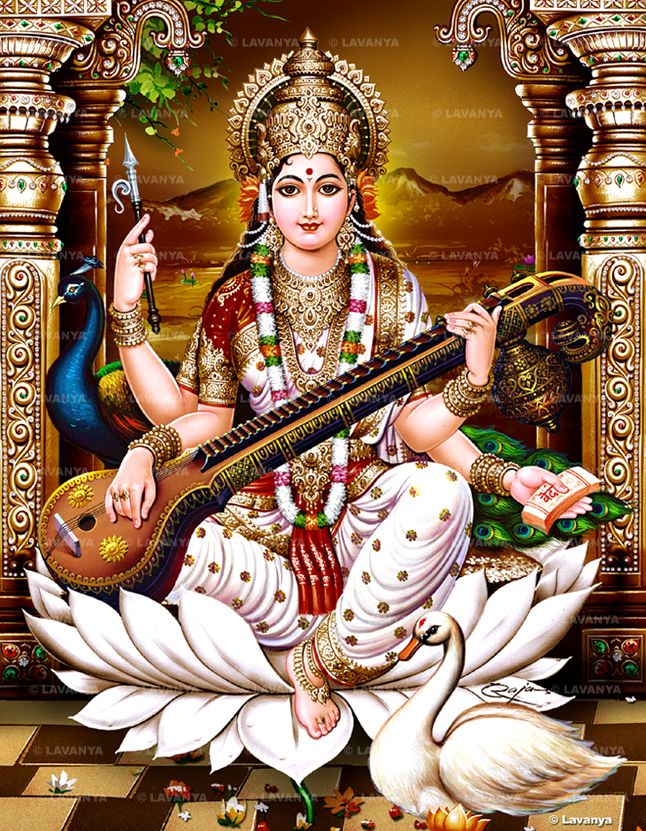Saraswati in Vedas: The Origins of Knowledge
Introduction
Long renowned for their great knowledge and spiritual insights, the Vedas—the ancient, revered Hindu scriptures—have Woven throughout these holy books is the fascinating presence of Goddess Saraswati, the personification of knowledge, wisdom, and the humanities. Her influence permeates the very fabric of Vedic literature, hence she is a natural component of the great lessons contained on these revered pages.
We investigate the many facets of Saraswati’s portrayal in the Vedas in great detail, revealing the rich symbolism and iconography that have made her a venerated figure in Hindu history. From her beginnings as a deified river to her elevation as a celestial goddess, Saraswati’s story reveals the depth of her relevance and the great influence she has had on the spiritual and cultural terrain of India.
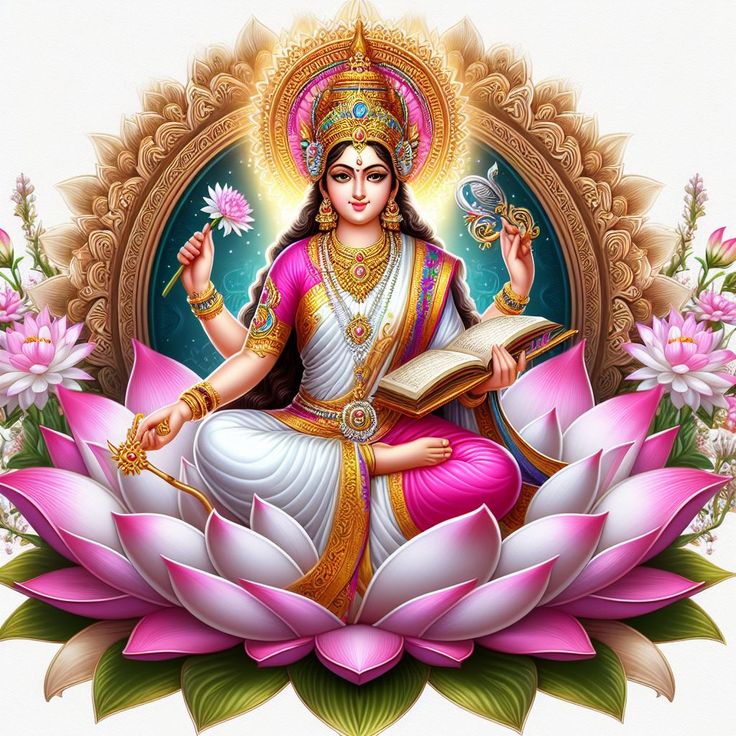
The Vedic Respect for Saraswati
The oldest and most venerated of the Vedic scriptures, the Rig Veda is full of hymns and songs honoring the glory of Goddess Saraswati. She is praised in these ancient books as the “best of mothers,” the “best of rivers,” and the “best of goddesses,” so underscoring the several dimensions of her heavenly character. The compelling prayer provided by the Rig Veda lines 2.41.16 and 2.41.18 begs Saraswati to bestow upon the devotees the gift of progeny and the ability of expression.
Described as the only river running with conscious knowledge, “pure from the mountains to the ocean,” the Vedic philosopher Vashishtha clarifies the relevance of Saraswati in the Rig Veda verse VII.95. Emphasizing her stewardship of the “riches of the manifold world of becoming,” he bestows upon her followers the abundant gifts of milk and clarified butter.
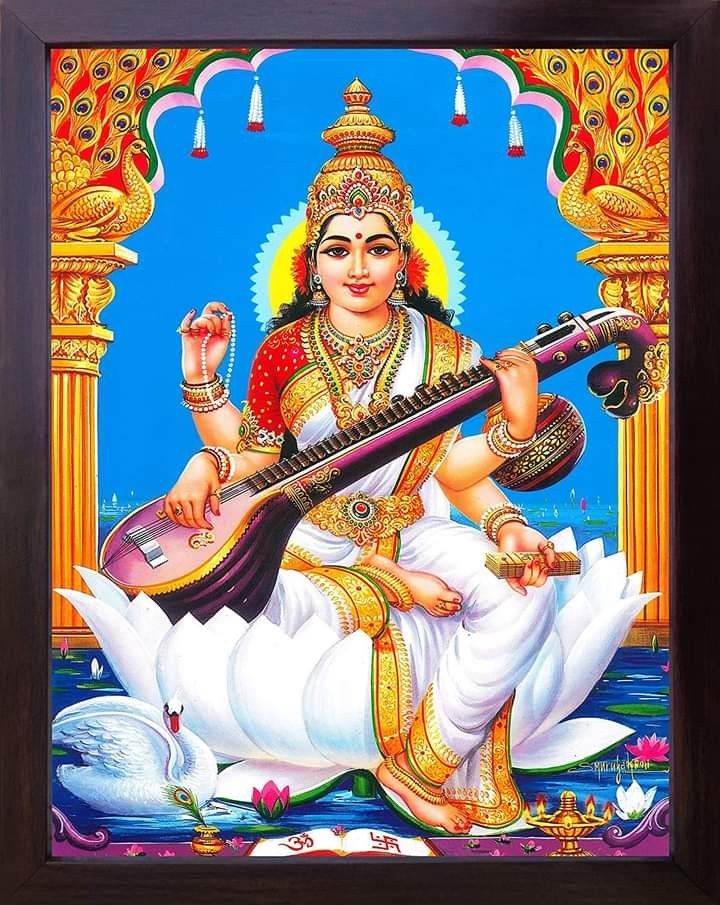
Saraswati’s Iconographic Interpretation
Rich in meaning, the iconographic representation of Goddess Saraswati captures her celestial qualities exactly. Often shown as a beautiful woman in pure white, she sits on a white lotus to represent the clarity of knowledge and the mental illumination. Manas, buddhi, citta, and ahamkāra make up Saraswati’s four arms—aspects of the mind and self-consciousness.
Saraswati has the Vedas, a mālā (rosary) for meditation, a water pot signifying cleanliness and discriminating, and a veena—a musical instrument signifying the creative arts and sciences—in her hands. The goddess’s divine attributes are further accentuated by her affiliation with the peacock (citramekhala) and the hamsa (swan or goose), therefore reflecting her capacity to distinguish between good and bad as well as the transforming power to turn negative into enlightened.
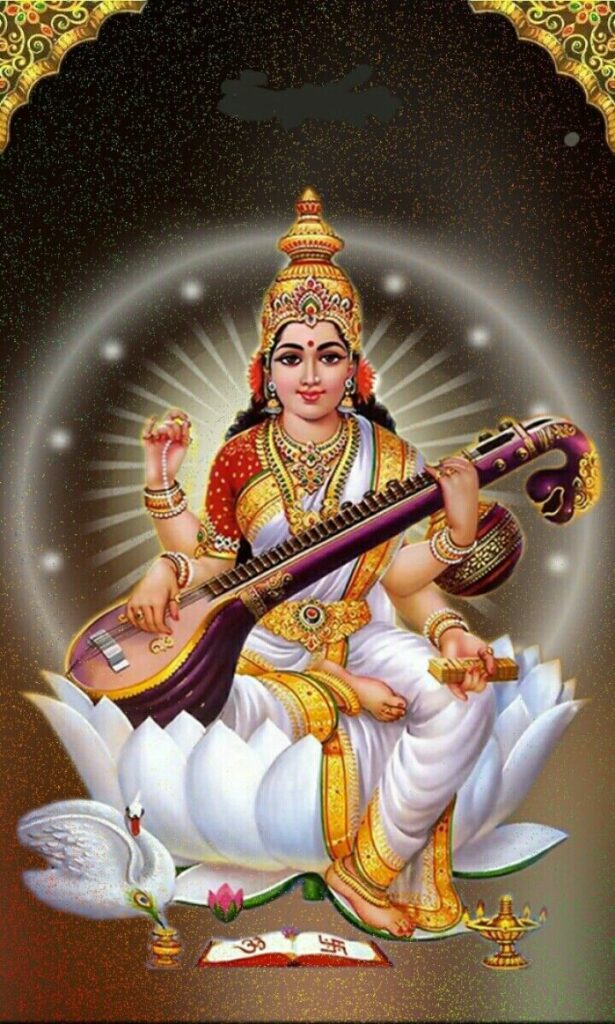
Saraswati’s Multiple Expressions
Hindu tradition recognizes Goddess Saraswati in many incarnations and avatars throughout several locations and traditions, hence transcending her Vedic roots. With eight hands clutching symbols of wisdom and the arts, Saraswati is shown brilliantly in the Hoysaleswara temple in Karnataka in a classical Indian dance stance.
Saraswati appears in the Shaktist tradition as Mahasaraswati, an eight-armed goddess seated on a white lotus clutching a Veena. She is connected with a strong meditation verse in the Devi Mahatmya and is venerated for her part in eradicating asurs (demonic forces).
Moreover, Saraswati is revered as Brahmani, a Matrika avatar or mother goddess, so reflecting the wisdom of ultimate truth. She is recognized in some customs as Vidhya, the formless idea of knowledge and wisdom, as well as Gayatri and Savitri, the Vedas’ personifications of purity and wisdom respectively.
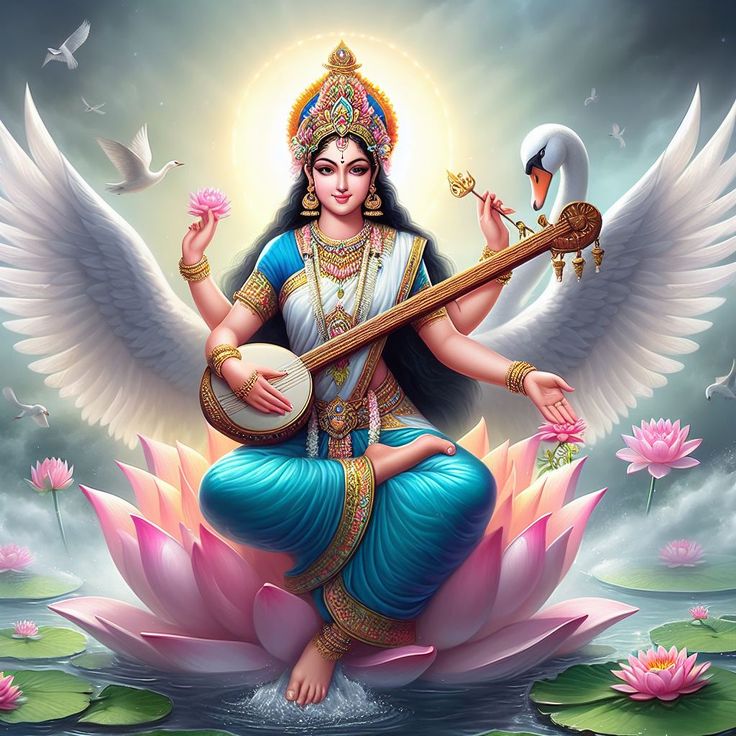
Saraswati in Epic and Puranic Literature
Beyond the Vedas, Goddess Saraswati permeates the epic and Puranic literature of Hinduism. She is shown in the Mahabharata as the goddess of knowledge and speech as well as a holy river for pilgrimages; her calm riverbanks draw priests and sages seeking austere living and sacrifice.
In her capacity as the goddess of wisdom, the Ramayana tells a fascinating story about Saraswati intervening to stop a certain catastrophe by changing the boon given to a rakshasa, demon. This reveals her heavenly might and her relentless dedication to uphold cosmic order.
Saraswati is said in Puranic books to have been created by Brahma for that intent. Different Puranas describe her marriage with Brahma and her responsibility as the mother of the Vedas, therefore confirming her major importance in Hindu mythology.
Saraswati’s friendship with Brahma
The Matsya Purana explores the complex relationship between Saraswati and Brahma, the universe’s creator. It tells the story of Brahma’s great longing for Saraswati, which causes her to circle him and produce faces on the sides and rear of Brahma’s head, therefore signifying the cosmic importance of their marriage.
An even more fascinating myth, the Bhagavata Purana tells of Saraswati, first one of Vishnu’s brides, growing jealous of Ganga’s looks toward him. This sets off a sequence of curses that define the paths of Saraswati, Ganga, and Lakshmi, so highlighting the multifarious and complicated character of the divine feminine in Hindu religion.
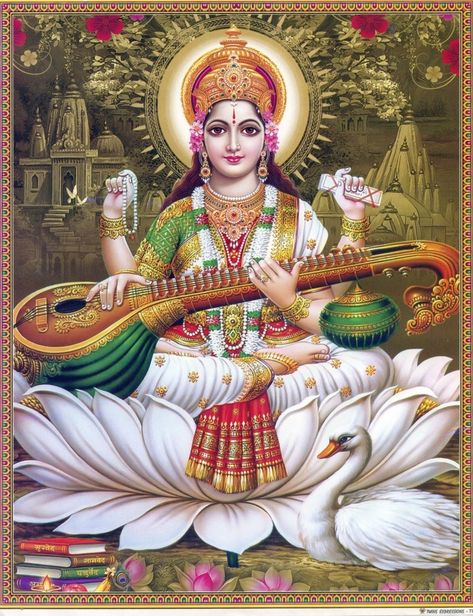
Saraswati within Shakta Texts
Particularly in the Devi Mahatmya, a section of the Markandeya Purana, Goddess Saraswati takes front stage within the Shakta tradition. This book describes the idea of the “triple goddess,” or Tridevi, in which Saraswati, together with Mahakali and Mahalakshmi, symbolizes the saguna (“with form”) emanations of the highest goddess, Mahadevi. Within this framework, Saraswati represents the active, creative principle within this holy triad.
Saraswati appears as Matangi, sometimes called as the “Tantric Saraswati,” in Tantric Shakta traditions. Matangi is also connected with conquering foes, fighting disease, and treating impurity even while keeping qualities of music and learning. Among the eleven Mahavidyas, the strong goddesses in Shakta tradition, she is unique.
Matangi’s importance reaches even into Shri Vidya Shaktism, where she is known as Shyamala, a manifestation of Lalita Tripurasundari’s wisdom power. Matangi is observed in this context at the Syamala Navaratri and is considered as Lalita’s prime minister.
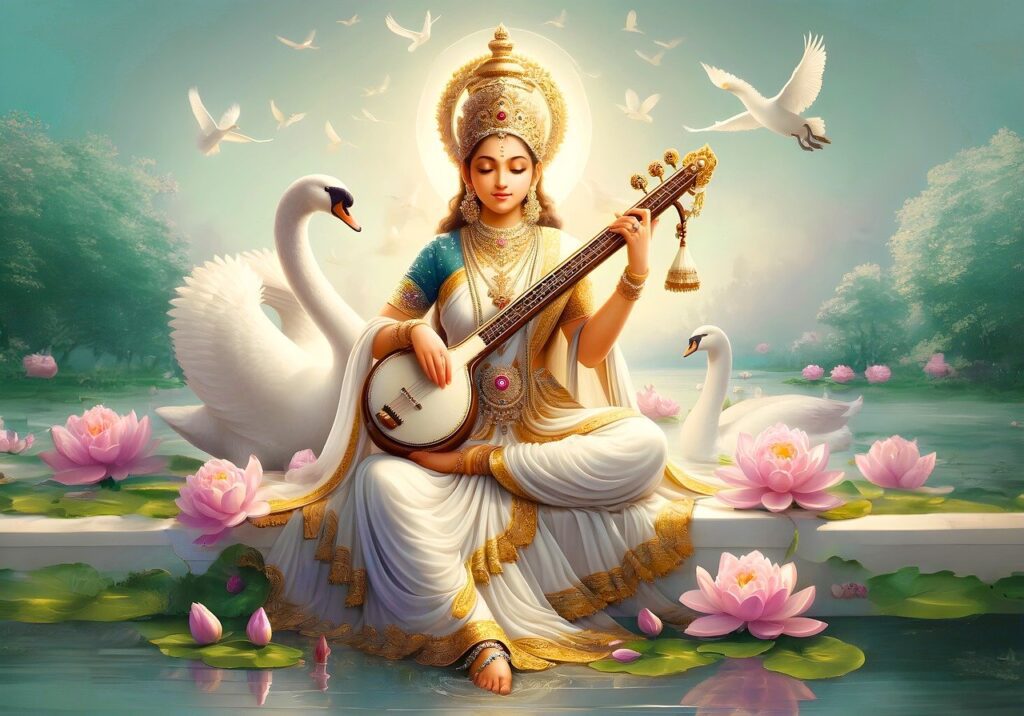
From Vedic personification to modern rediscovery, the Saraswati River
The ancient Saraswati River, which runs through the Vedic writings, reflects Goddess Saraswati’s link to the physical world. Two rivers still running in northwest India, the Saraswati River is mentioned in the Nadistuti song in the Rigveda (10.75) as running between the Yamuna in the east and the Sutlej in the west.
Further attesting to its importance in Vedic literature are references to the Saraswati River made by the Brahmanas in the Mahabharata. The Mahabharata even calls Saraswati “vedanam matram pasya,” the mother of the Vedas, hence emphasizing the natural connection between the goddess and the holy river.
Fascinatingly, it is thought that the Saraswati River disappeared underground in 1500 BCE. But in recent years, satellite images have verified the existence of subterranean water in a river-course-like pattern in Western India and in 2015, Yamunanagar in Haryana was found to have subterranean fresh water under consideration as the waters of the vanished Saraswati River. Now actively restoring the river’s path with old scriptures as a guide, is the government of India.
Saraswati’s Embodiment of Enlightenment Knowledge
The importance of Goddess Saraswati in Hindu practice goes much beyond her physical form as a river or her several iconographic interpretations. She is the living example of knowledge, wisdom, and the arts; she guides those on the spiritual path the Vedas capture.
Respected for her capacity to impart the realization of the essence (sara) of one’s own Self (swa), Saraswati is personified as the highest knowledge (maha vidya). She stands for purity and the higher sattva guna, that which is good and enlightened.
Renowned Indian philosopher and yogi Sri Aurobindo said, “Saraswati means,’she of the stream, the flowing movement,’ and is thus a natural name both for a river and for the goddess of inspiration.”
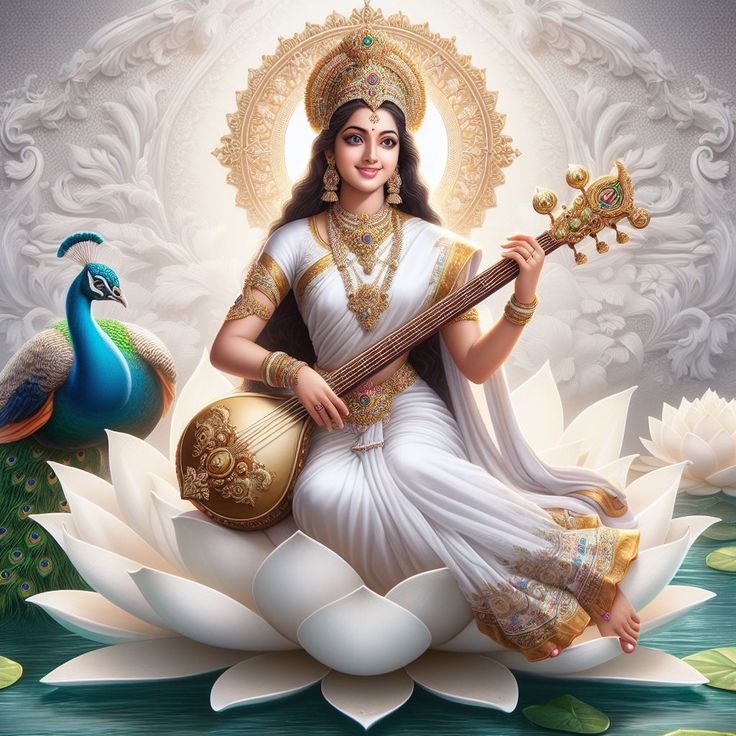
Enduring Legacy of Saraswati
Hindu tradition’s ongoing legacy of Goddess Saraswati is evidence of her great relevance and the complex character of her holy essence. From her Vedic beginnings as a deified river to her climb as a respected goddess of knowledge, wisdom, and the arts, Saraswati’s impact has woven itself across India’s spiritual and cultural fabric.
Saraswati is a perennial emblem of enlightenment guiding seekers on their path of self-discovery and illumination whether as the mother of the Vedas, the embodiment of the divine feminine in Shakta traditions, or the personification of the ultimate knowledge. Scholars and followers alike are still inspired by her fascinating iconography and many expressions throughout civilizations and traditions, therefore assuring that the brilliant core of Goddess Saraswati will always be entwined into the fabric of Hinduism.
Conclusion
Within the great and rich tapestry of Vedic literature, Goddess Saraswati emerges as a lighthouse of knowledge, wisdom, and the arts. From the early hymns of the Rig Veda to the epic and Puranic stories, her presence is woven into the very fabric of Hindu tradition, so defining her position in the spiritual and cultural legacy of India.
Saraswati’s multifarious iconography, her many appearances in different countries and customs, and her close relationship with the holy Saraswati River all help to emphasize the goddess’s ongoing importance. Saraswati, the embodiment of the divine feminine force and the highest knowledge, inspires and guides seekers on their road of enlightenment; her brilliant essence is always imprinted in Hinduism’s collective consciousness.
#saraswati #goddess #saraswatigoddess #origin #history #knowledge
